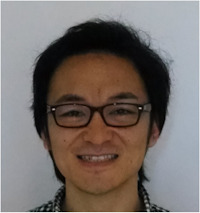PJ: Can you tell us a bit about yourself?

MK: I did my Ph.D. in Cell Biology. Through these studies, I extensively learned about cell biology and cutting-edge live cell imaging by fluorescence microscopy. To further extend my knowledge about fluorescence microscopy, I joined a postdoc program in Dr. Terakawa’s laboratory and learned about whole-body imaging and intra-vital imaging. Dr. Terakawa has long engaged in cell physiology using optical techniques, especially light microscopy at a high resolution, with and without staining. Using DIC microscopy and evanescence microscopy, he succeeded in visualizing exocytosis in exocrine, endocrine, and neuroendocrine cells. He invented the ultra high NA objective lens (NA=1.65), and realized its marketing through Olympus Corporation. It allowed the evanescence microscope to be used routinely in the biomedical laboratories. Later, he was interested in pathological state of cellular responses, such as the glutamate induced neuronal cell death, osteoporosis-causing osteoclast activity, oxygen radical-related failure in islet cells. Because of his diverse experience in optical microscopy, working in his laboratory was very attractive for me.
PJ: Can you briefly explain the research you published in PeerJ?
MK: In cancer biology textbooks, the mechanism by which circulating tumor cells escape from the blood stream is often explained using an analogy that neutrophils invade into endothelial walls to get out of the vasculature during immune responses. We developed the hematogenous metastasis model using transparent zebrafish larvae to actually “watch” this dynamic process. Like immune cells, the cancer cells forming embolus invaded into vascular walls, but surprisingly the surrounding endothelial cells often covered up the cancer cell masses and let them all escape from the circulation even though the cancer cells were quiescent. Our finding suggests that activation of endothelial cells by cancer cells is an important process for metastasis formation as well as invasion of cancer cells.
PJ: Do you have any anecdotes about this research?
MK: While we were developing a method to inject human cancer cells into very small blood vessels in the zebrafish larvae, another group reported the zebrafish hematogenous metastasis model that is what we were trying to make. It was unfortunate for us. We then followed their method and created the model. Interestingly, however, the injected human cancer cells behaved differently, probably due to the different cell types, from those previously reported, and we could observe the interesting manner of cancer cell extravasation that we call “endothelial cell-initiated extravasation.” Interestingly, by using a similar model system, we and other group found different phenomena.
PJ: What kinds of lessons do you hope the public takes away from this research?
MK: Seeing often leads us to the discovery of novel mechanisms that we can’t even imagine. Imaging studies in vivo should be pursued more rigorously to understand the cancer metastasis which is the common fatal process for the patients of cancer.
PJ: Where do you hope to go from here?
MK: In this research, we observed the interaction between human cancer cells and zebrafish endothelial cells, and our finding suggests interesting mechanism of cancer cell extravasation. Unfortunately, this phenomenon was only observed using the zebrafish model, so that we need to confirm that this cancer cell extravasation actually occurs in mammals. Old study performed by electron microscopy suggested similar type of cancer cell extravasation occurred in the lung metastasis mouse model. However, we cannot build the same imaging system as the zebrafish model using mouse models at this point, because of the limits of the current intravital microscopy. There are many difficulties that need to be overcome, but the imaging research field has shown dramatic progress recently. We hope to make this imaging system possible in the near future, and prove this novel type of cancer cell extravasation actually happens in mouse models.
PJ: You published a preprint and submitted the text to PeerJ for formal peer-review. Can you explain why?
MK: It has been a while since we wrote this manuscript, so we wanted to get this work published as soon as possible, in order to get feedback from other researchers, and also take credit for our findings. For this, a preprint system was a good way to go. We still understand, however, how important the peer-review process is to re-think if our conclusion is appropriate, and improve quality of the studies and the paper.
PJ: How would you describe your experience of our submission process?
MK: PeerJ’s submission process was so interactive and quick! In our previous experience, we barely interacted with the journal staff after submitting a manuscript until their decision was made. In contrast, PeerJ was very interactive and responsive, so that we could clearly follow the process.
PJ: Would you submit again, and would you recommend that your colleagues submit?
MK: Absolutely. We think PeerJ is a good choice, not to waste time for multiple re-submission processes – and reasonable cost is also a big factor to choosePeerJ.
PJ: In conclusion, how would you describe PeerJ in three words?
MK: Friendly, Interactive, Fast
PJ: Many thanks for your time!
MK: My pleasure!
Join Masamitsu Kanada and thousands of other satisfied authors, and submit your next article to PeerJ.
